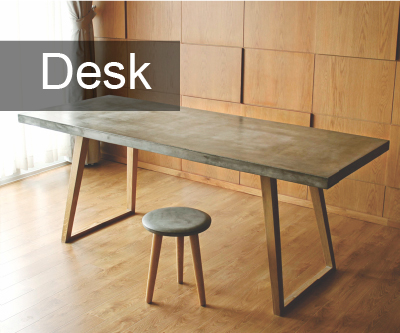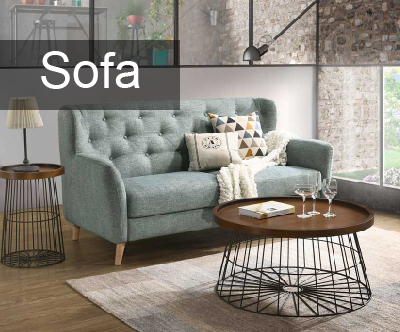
Leon’s social media manager Autumn Hachey. (Portrait by May Truong)
Autumn Hachey is a 25-year-old social media manager for Leon’s Furniture.Canada. Her age is important because her job is to reach certain customers that have so far eluded the retailer: young people. Last May, she collaborated with Lindsay Stephenson, a designer in Toronto, to redecorate a couple’s small apartment and publish the before-and-after on Leon’s lifestyle blog. For the living room, they picked out one of Leon’s most elegant pieces, a cream-coloured button-tufted sofa with rolled arms reminiscent of something you’d find in a Parisian salon. Stephenson posted a picture of it on the blog and on her Instagram. What came next was a slew of double taps and proclamations of couch love. A handful of people couldn’t believe the sofa’s origins.
“That’s a Leon’s sofa?? Wow!” wrote one follower. “I would not in a million years guess the couch was from Leon’s!” To which Stephenson replied, “I KNOW, right!!?? It’s insane.”
This was exactly the reaction Hachey was hoping for. Last year, the company hired a consulting firm to find out what Canadians thought of Leon’s. While older Canadians expressed fond memories of the brand, younger ones wrote off the store as a place for grandpas who like all things brown and bulky. Hachey admits even her aunt thought Leon’s was all about the La-Z-Boys. The truth is, the Toronto-based retailer has been stepping up its selection with items that don’t scream 1982. But it still struggles with the perception that it’s old and outdated. If only Leon’s could change people’s minds, it would make all the difference. Case in point: Sales of the tufted sofa have doubled since the makeover reveal. “All we did was highlight a style a lot of people didn’t know we had,” says Hachey.
Getting consumers to think differently about the 106-year-old brand has never been more important. In 2013, the company was stung by a Competition Bureau lawsuit accusing its deferred payment plans (of “Ho, ho, hold the payment” fame) of being deceptive and resulting in customers paying hundreds in hidden fees. Leon’s denies the allegations, and the case is still before the courts, though the retailer’s reputation has taken a bruising.
Leon’s is also getting squeezed in an increasingly crowded furniture and appliances sector—Walmart has increased its Supercentre count across Canada, and Ikea is set on doubling sales by 2020. Even Best Buy, once a mere purveyor of laptops and cellphones, has enjoyed sharp gains in its appliances category. This prompted Leon’s to swallow up its chief Canadian competitor, The Brick, in a $700-million acquisition that brought its total location count to more than 300. After the purchase, refreshing the Leon’s brand became more crucial than ever in order to differentiate from The Brick, which also relies on sales promotions to push middle-of-the-road furniture. The Brick will remain much as it always was, while Leon’s will now appeal to your lifestyle aspirations.
To start, the company is targeting a new customer. Today’s typical Leon’s shopper is a 52-year-old male, but the company’s ideal client is a busy 35-year-old woman who cares intensely about her home and likes to share photos of her imperfect but real living space on social media. She’s looking for a taste of the good life, and she just so happens to control the purse strings when it comes to big-ticket buys. Spearheading the brand evolution is Michael Walsh, who was anointed president of Leon’s last May after being plucked from his former gig as Canadian Tire’s vice-president of store operations. Appointing a president who doesn’t bear the Leon family name, a first for the company (which is four generations deep), is a symbolic move that says volumes about how critical a new brand identity is to the future of Leon’s. The question is just how far a centenarian business can stray from its roots without alienating its most loyal customers.
If you’re partial to the grey-wash movement that’s taking over North American living rooms, you might like the Astin sofa at Leon’s. With its heather grey fabric, sophisticated lines and shelter arms, it’s a worthy candidate for adopters of the new neutral hue. Last November, sales of the Astin sofa shot up to an all-time high after it was featured on the cover of the Hello Holiday guide, Leon’s inaugural 92-page digital catalogue of DIY crafts, easy recipes and decor inspiration that channel the Pinterest ethos. “Whenever you bring in something new and stylish, you should have it prominently displayed so customers can see you’re innovating, or else you get stale pretty quick,” says Walsh, who stays in tune with what shoppers want by talking directly to the salespeople.
Walk into a Leon’s store today and you’ll find the hottest trends dominating home design: mid-century modern, rustic revival and industrial chic. Over the past nine months, Leon’s introduced more contemporary styles that address small-living conundrums (read: they’re multi-functional and have built-in storage). At any given time, roughly 20% of its floors boast brand new pieces; patio furniture will make its first appearance this summer. There’s also a custom colour program, where customers can special-order select upholstery in up to six colours—charcoal greys, burnt oranges and teals have “exploded,” says marketing manager Lewis Leon. “If you were to look at our showroom 10 years ago, it would’ve been a sea of brown.”
The need to be more au courant was triggered by consumer research, which revealed many Canadians didn’t peg Leon’s as a store that sold stylish furniture, or, for that matter, that it sold anything else, such as stainless steel gas ranges, curved 4K TVs and gel-infused mattresses. Furthermore, Leon’s can’t afford to ignore younger consumers. After all, growing up is considered the most lucrative event in retail. Getting married, buying a first home, having babies—it all precipitates the need to purge sad futons and cheap particleboard Ikea tables, and upgrade to something a little more adult. “The holy grail for marketers is to create generational buyers,” says James Smerdon, vice-president and retail consulting director for Colliers International. “By appealing to young families as opposed to their parents, Leon’s could sell them furniture over a number of life stages.”
A big challenge for Leon’s, though, is that consumers don’t visit furniture stores frequently. “There’s no expiry date on furniture, so people don’t necessarily need to come in the store as often,” Walsh says. The Franklin Furniture Institute, which conducts industry research out of Mississippi State University, found that people kept their sofas for seven to 10 years, while wood furniture stuck around for more than 15 years.
Since customers are buying furniture and appliances with longevity in mind, getting them to visit a Leon’s store on the regular would take a minor miracle. Last year, the company embarked on its boldest effort yet to boost foot traffic: accessories. Leon’s worked with Canadian vendors to bring in a smorgasbord of cushions, mirrors, paintings, lamps and rugs, betting that accessory sales will increase visits and drive revenue growth in the future. After all, chevron-patterned throw pillows are so last year, and who knows how long Edison bulbs will stay cool? The new additions couldn’t come at a better time too, as fast-fashion megabrands H&M and Zara have recently brought their home accessories offshoots to Canada. “It’s amazing that if you bring [in accessories] and offer them at a competitive price, there’s not a lot of selling involved,” says vice-president of merchandising Graeme Leon, whose number one priority is to fill stores with more fashion-forward products. Though not entirely attributed to accessories, Leon’s 2015 revenues were strong at $2.03 billion, a 1.2% increase from the year before.
For the same reason retailers push distressed denim, kale juice and matcha-flavoured anything, churning out trendy products is code for letting customers know you’re relevant, says Saurabh Mishra, an associate marketing professor at McGill University. Mishra believes a beefed-up accessories section will help Leon’s keep customer relationships alive between bigger purchases. “A brand is a function of what it offers. If you slowly modernize your products, it will slowly modernize the brand,” he says. But offering all the pineapple motifs and faux deer heads in the world doesn’t immediately translate to packed stores. Customers still have to be informed.
To let people in on its new wares, Leon’s debuted the Hello Yellow blog last May. The surprisingly cheerful DIY site is run by designers-slash-entrepreneurs who teach you how to tastefully scatter accent colours and pair relaxed textures with neutral hues. Starting on April 24, Leon’s is reaching an even bigger audience with HGTV Canada’s newest home transformation show, Home to Win. As the official furnisher, Leon’s will see its products make regular cameos in the 10-episode multiplatform series, which follows an all-star cast of makeover masters like Mike Holmes and Sarah Richardson as they renovate a house and decorate it from scratch. “The people who watch these shows are young, and they’re the customers we want to bring to the brand,” says Leon’s senior marketing executive Andrea Graham, articulating the ad-blocking generation’s desire for meaningful content and genuine engagement with real people. Even so, there is a lot of history for Leon’s to overcome.
A slogan is one of those brand elements, like a jingle or a spokesperson, through which one could tell the story of a company. “Ho, ho, hold the payments,” “don’t pay a cent” and “no money miracle,” are Leon’s most iconic tag lines. You may not have seen these commercials recently, but the slogans are probably lodged in your head.
Leon’s started to prominently promote its no-interest financing plan starting in 1986, though the promise of easy credit has been a part of the company’s DNA from the very beginning. In 1909, the founder and patriarch, Ablan Leon, opened the first Leon’s store in the small town of Welland, Ont. The Lebanese immigrant sold general merchandise like pants, blankets, shoes and hardware items. One day, a customer walked in and saw a mattress leaned up against the wall; it was Ablan’s wedding gift for one of his sons. The customer asked if it was for sale. Ablan said it was, and that day he made more money in one single transaction than he ever had before. He realized big-ticket items like mattresses meant bigger profit margins, so he decided to sell sofas and ringer washers, too.
Ablan, who had to peddle clothes out of a suitcase to support his wife and 11 kids, would often let customers pay him whenever they could. This was enticing in a town flush with working-class newcomers who had modest incomes and no previous credit histories. “He was very trustworthy among his customers, and they returned that trust with a lot of respect,” says Terry Leon, Ablan’s grandson and Leon’s chief executive officer.
But if Leon’s is to be an aspirational brand today, the company has to sell itself on more than just instant credit. That’s why, in late February, Leon’s released two new national 30-second commercials that didn’t promote a single price cut or financing plan. Instead, the ads strike a down-to-earth chord, tracking the daily activities we all engage in, like napping and cooking dinner, while celebrating the sofas and stoves that help us do them a bit better. The ads also tout a new tag line: “Part of the family.” This is the first stage of a multi-pronged marketing strategy to turn Leon’s into a lifestyle brand. Later this year, the company will launch a third commercial and a print campaign, while its social media game plan will see continued collaborations with the buzziest influencers in home decor and lifestyle blogging. Price markdowns won’t be completely abandoned but will take a few steps back.
To further insinuate itself into consumers’ lives, Leon’s is dabbling in experiential marketing. On a Saturday morning last June, more than 150 people gathered at the Leon’s flagship location in downtown Toronto. The group, mostly comprising busy moms dressed in black tights and bright tank tops, took part in a free yoga class in the showroom, right beside the mounted flat screens and stainless steel stoves. In case the connection between frog poses and furniture wasn’t obvious, Leon’s hired a feng shui expert to dole out free advice on decluttering homes. One woman at the event pointed up to the sky at her condo and said, “I live there, and I had no idea Leon’s sold small furniture!”
Only time will tell how customers will react to the revamped vision. Bruce Winder, for one, is not optimistic. The co-founder and partner of Retail Advisors Network points out that Leon’s desired market positioning pits it against furniture companies such as CB2 and EQ3, which already have proven track records of selling exquisite products that stoke envy among house guests. Plus, there’s that Swedish titan churning out irresistibly clean design at ruthlessly low prices. If Leon’s wants to turn young skeptics into believers, it might actually do better by playing up its splashy sales and friendly financing reputation. Says Winder: “Millennials love a good deal, too.”
It also takes decades for brands to change a long-held perception. And if the repositioning is too much, too soon, Leon’s risks losing the goodwill of its older clientele. “It’s like having a good friend you’ve known for 20 years suddenly change his personality overnight,” says Winder. “Your first question is going to be, ‘What’s wrong with him?’”
The chain’s tricky balancing act is evident in its showrooms. Sure, there are pieces that wouldn’t look out of place in West Elm, but then there are furnishings tailor-made for the middle-aged man cave, such as a massive black leather sofa with built-in surround sound, a power-reclining feature, phone-charging ports and Bluetooth connectivity to allow couch potatoes to play music from their smartphones. (Oh, and there are compartments for storing cold beer and salty snacks too.) At the store adjacent to the company’s headquarters in Toronto, Walsh made sure the couch was featured prominently on the sales floor.
Still, Leon’s has recognized it needs to be more mindful of the ever-changing ways in which we live. (That’s top of mind for Walsh, who is adamant about personally reading all 100 or so customer comment cards he receives every month.) Square footage in urban homes is shrinking faster than furniture manufacturers can produce new pieces. Patios are looking more like living rooms. Every single room is expected to exude personality and charm. Much like what we eat, wear and tweet, our homes are a statement of who we are.
The shift won’t be easy for Leon’s, but Walsh says the firm’s long track record works in its favour. “You don’t get to be a 100-plus-year-old company from doing things wrong,” he says. Corporate longevity is good. Staying relevant is better.
(Source: canadianbusiness.com Author: Mai Nguyen)

























 沪公网安备31010402003309号
沪公网安备31010402003309号